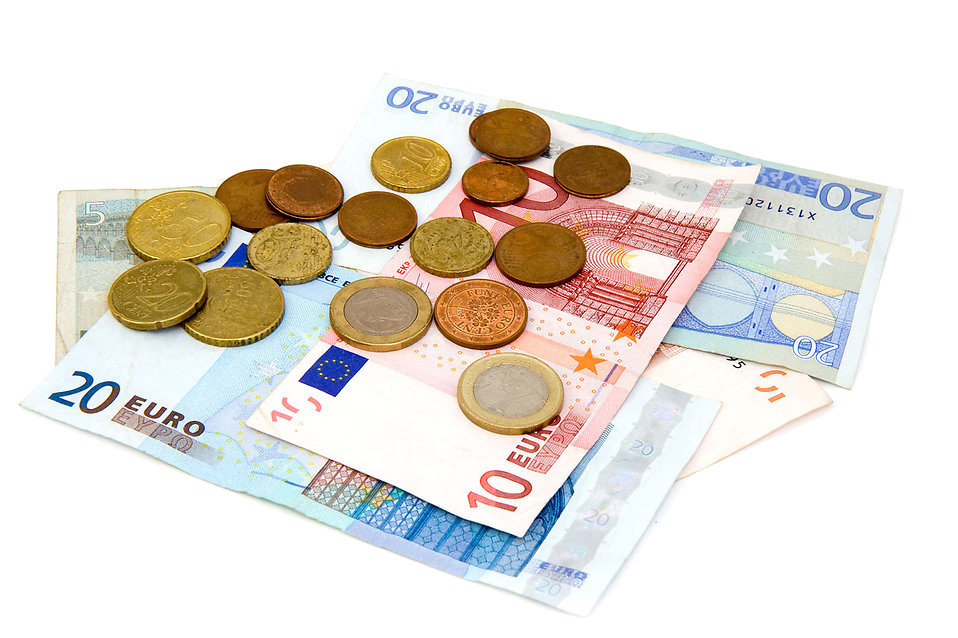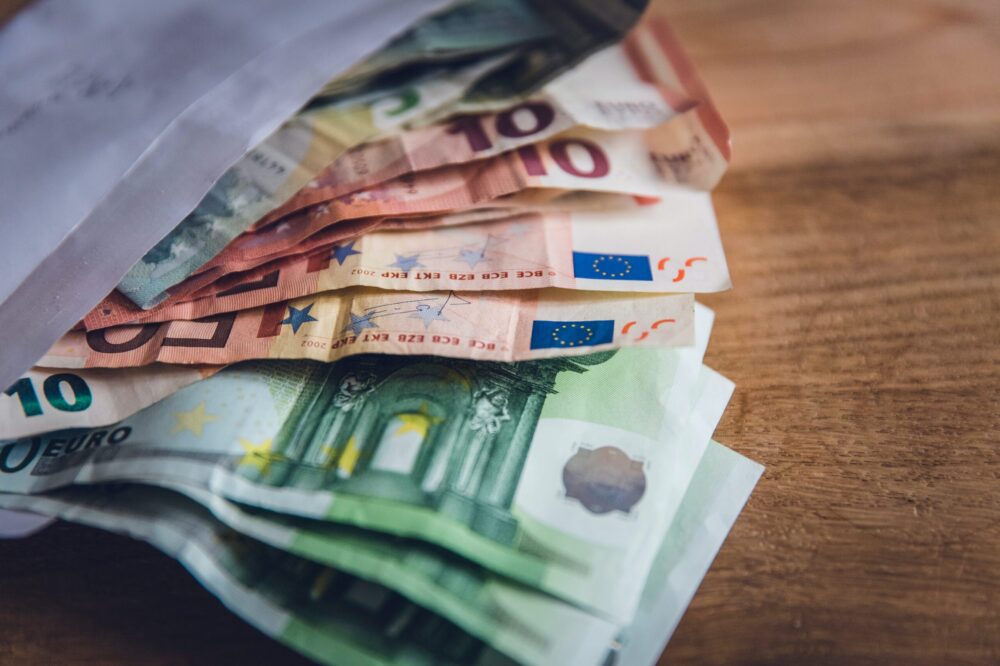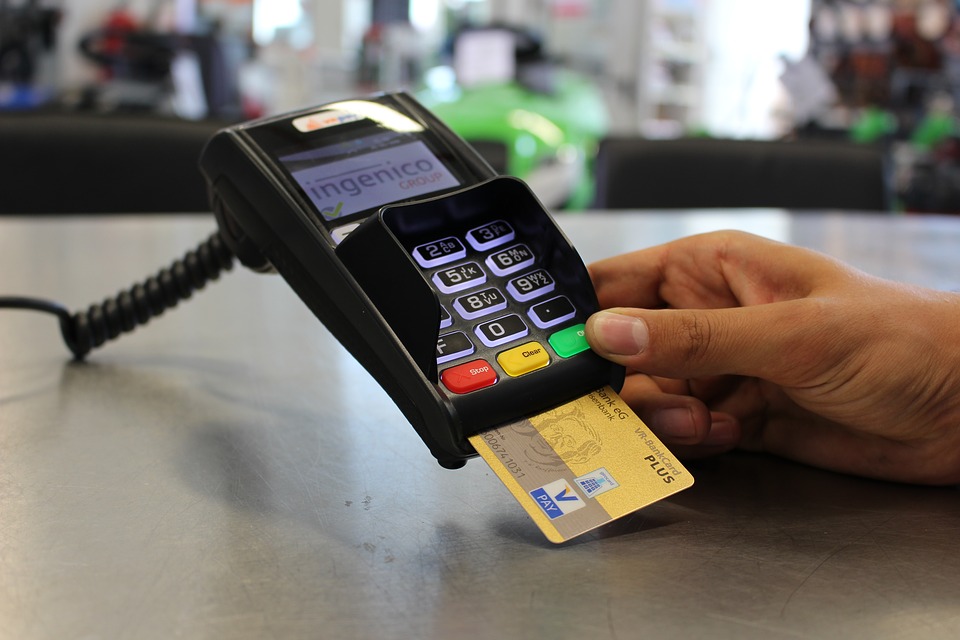Currency in Belgium
A definitive guide for Aussie travellers
What is the main currency used in Belgium?
The official currency in Belgium is the Euro.
If you’re in a store or restaurant you’ll probably see the Euro symbol listed: €.
Online and in currency exchange stores you’re more likely to see the three-letter ISO code: EUR.
Each Euro is broken down into 100 cents.

Belgium was a founding member of the Eurozone, adopting the currency on 1st January, 1999. Before that date, the Belgian currency had been the Belgian Franc.
The Euro is issued by the European Central Bank, and used by 20 countries within Europe in total. The collection of countries using the Euro is commonly referred to as the 'Eurozone'.
Where do I buy Belgian currency?
You can compare the best places to buy Euros on our website:
Compare between different money changers and different delivery methods, including cash-pick up and postal delivery.
As an alternative you could buy a prepaid travel card which you can top up and use to spend and withdraw in Euros conveniently once you arrive.
If you’d rather buy your cash before you go, check out our handy Currency Exchange Locator tool, to find an exchange near you.
Changing a few dollars to Euros with an in-person money exchange can be helpful if you need some cash instantly on arrival, but you will normally find you get better rates if you use a travel money card and withdraw some cash at an ATM at the airport instead.
What does currency in Belgium look like?
Euros have a distinctive design and colour scheme. The notes are a mix of greens, reds, blues and yellows.
The larger notes in monetary terms are also larger in size: a €500 note is 25% wider than a €5 note.
The notes depict different windows and doorways that you would typically find in different periods of Europe's history, such as the Gothic, Renaissance and Baroque periods.

Currency Denominations
You’ll find coins in the following denominations:
- 1 cent
- 2 cents
- 5 cents
- 10 cents
- 20 cents
- 50 cents
- €1
- €2
Notes are available in the following denominations:
- €5
- €10
- €20
- €50
- €100
- €200
- €500 (no longer issued, but old notes remain legal tender)
How it's written
You’ll sometimes see the Euro symbol before the number - so €500 for example - but you’ll also see the symbol used after the number - 500€. In both cases the meaning is the same.
What do things cost in Belgium?
The cost of travelling in Belgium will vary widely depending on where you’re headed - and the sorts of things you like to do. Naturally, big cities tend to have higher costs overall, while more rural areas may come with a lower price tag for day to day life. Here’s a brief example of some costs for common consumer and traveller purchases in Belgium:
- Meal at an inexpensive restaurant - €15.00 (AU$23.10)
- Pint of beer - €4.00 (AU$6.16)
- Cup of coffee - €3.08 (AU$4.74)
- Bottle of water - €2.23 (AU$3.43)
Data is from Numbeo's cost of living index.

What is the current exchange rate in Belgium?
Exchanging money in Belgium
Let’s look at some of the different places where you can exchange AUD for EUR in Belgium.
The main options are:
- Exchange kiosks, stores and desks - look for the Bureau de change sign
- Airports, train stations and hotel currency exchange desks
- Use ATMs to withdraw cash direct from your bank
Don’t forget - you may get a better exchange rate and lower overall costs if you take a prepaid card or a travel debit card instead.
Exchange kiosks - particularly those at places with a captive market like a hotel or airport - can have poor exchange rates which hide lots of extra costs.
And using your normal bank card at an ATM can mean paying your own bank’s foreign transaction fee - often in the region of 3%.
Travel money tips for Belgium
Here are a few final tips to make your money go further when you’re travelling in Belgium:
Take a prepaid card - choose a provider like Wise to top up your card in AUD and convert to EUR using the Google exchange rate. That saves you money, and helps you budget too
Don’t change money at the airport - airports often offer some of the poorest exchange rates out there, because customers are in a hurry and may not check over the full costs of currency conversion
Have different payment methods available to you - having a Plan B never hurts. Carry a small amount of cash, a prepaid card and a debit or credit card on a different card network, so you’ll have alternatives no matter where you are
Always pay in the local currency - merchants and ATMs may offer you the option to pay in AUD instead of Euros. Don’t. Pay in the local currency, or you’ll get hit with high fees and a bad exchange rate
Watch how many ATM withdrawals you make - it’s common to find ATM fees kick in with prepaid cards after a certain number of withdrawals, so double check your own card’s fee structure
Avoid taking out cash with a credit card - credit cards almost always charge a cash advance fee, foreign transaction fee, and immediate interest when you withdraw cash, making this a costly option
Don’t keep too much cash on you - opportunist theft is an issue the world over, and can be particularly problematic when you’re disorientated, in a new place, and too busy having fun to keep an eye on your wallet
Can I use Euros issued in Belgium in other countries?
Yes, you can use Euros from Belgium in the rest of the Eurozone, and vice versa.